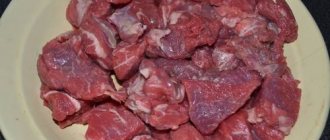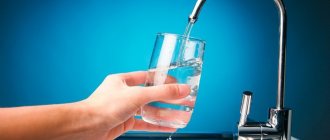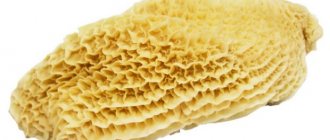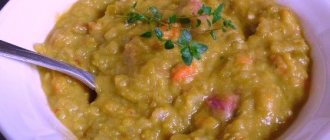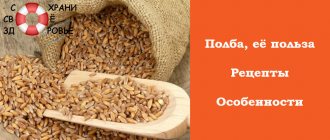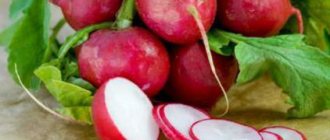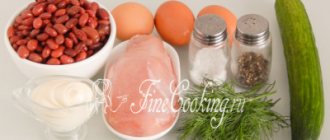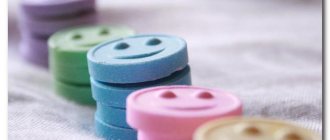Which corn is healthier: raw or boiled?
Theoretically, the largest amount of vitamins and minerals is found in raw corn. But using it in this form would be at least difficult. Firstly, raw corn has a very specific taste, and not everyone will like it. Secondly, it is more difficult for the body to digest such grains, and this can cause certain stomach problems.
There are varieties of corn that can be eaten raw. Their grains have a relatively soft shell and have a sweetish taste. The length of such an ear does not exceed 5 cm. But such varieties are not grown in Russia.
Corn cooks for quite a long time, and during this time, under the influence of high temperatures, many vitamins are destroyed. According to scientists, boiled corn contains only 20–30% of the nutrients it originally contained. But even so, it is beneficial for the body. It perfectly preserves fiber, which helps normalize digestion. Therefore, for people who adhere to a therapeutic diet, boiled corn is much healthier than raw corn, because it is better absorbed and puts less strain on the gastrointestinal tract.
In general, boiled corn is healthier not only than its raw, but also its canned counterpart, since it does not contain any additives. Canned food contains vinegar, sugar and salt, so it is contraindicated for certain diseases. As for frozen corn, it is boiled before freezing, so that it has all the properties of boiled corn.
Composition and calorie content
The energy value of boiled corn is 123 kcal per 100 g. Moreover, it contains a lot of useful elements. First of all, it is fiber, which helps normalize digestive processes. In addition, boiled corn contains:
- Amino acids are a kind of building material for proteins. They play a vital role in metabolic processes. Amino acids normalize heart function, improve brain activity, promote accelerated elimination of toxins and heavy metals from the body, and protect the liver from harmful effects. Corn contains glycine, methionine, choline, tyrosine and other amino acids.
- Ascorbic acid and vitamin E are two fairly strong antioxidants with anti-inflammatory properties. In addition, they have a beneficial effect on the condition of blood vessels. Vitamin E takes care of the condition of the skin, hair and nails; it is not for nothing that cosmetic products are enriched with it.
- B vitamins are responsible for normalizing metabolic processes.
- Vitamin PP, necessary for the proper functioning of the cardiovascular system.
- Microelements, including fluorine, molybdenum, iodine, phosphorus, copper, etc. All of them participate in metabolic processes and contribute to the saturation of the body's cells with oxygen.
Interestingly, corn kernels even contain microscopic amounts of gold. This is the only food product that contains this element.
Thus, boiled corn contains vegetable protein, vitamins and complex carbohydrates, which makes it an ideal product for dietary nutrition, especially since its grains do not contain gluten. This means that they can be consumed even by people who suffer from celiac disease. Properly cooked corn does not cause any dyspeptic symptoms such as bloating and flatulence precisely because of the absence of this protein.
Benefits of boiled corn
General benefit
This cereal, even when boiled, is useful for everyone. Regular consumption of corn:
- Helps lower cholesterol levels, prevent the formation of plaques and thereby reduce the risk of developing cardiovascular diseases.
- Allows you to regulate metabolic processes.
- Helps improve the conduction of nerve impulses.
- Strengthens the immune system.
- Relieves constipation and some other problems of the digestive system.
Young ears of corn help cope with kidney and gallstones. Boiled hairs of the culture, called stigmas, are also useful, so you should not throw them away during the preparation of the dish.
For women
Corn contains amino acids that help reduce pain before menstruation, as well as get rid of migraines. In addition, the methionine present in grains will be useful for women who take hormonal contraceptives. Antioxidants contained in corn prevent the development of inflammatory diseases, including those of the pelvic organs.
For men
Boiled corn is one of those foods that gives a person strength. Men need it during strength training and physical labor. After all, corn contains amino acids that muscles need. And the grains of this cereal are champions in the content of vitamin K, which is so necessary for the heart and blood vessels.
During pregnancy
Corn is useful for expectant mothers in that it helps eliminate swelling that often accompanies pregnancy. In addition, corn is a low-calorie product, so it allows a woman to control her weight, which is very important during pregnancy. But at the same time, corn supplies the body with all useful substances and perfectly satisfies hunger.
The fiber contained in its grains helps improve digestive processes, therefore it is an effective prevention of constipation, which expectant mothers often face.
In the early stages, eating corn helps to cope with toxicosis. And the iron contained in its grains helps normalize hemoglobin levels and prevent the development of anemia, which threatens a woman throughout pregnancy.
Of course, boiled corn should be consumed in moderation. In addition, you should consult your doctor first. The fact is that during pregnancy, blood clotting rates may increase, and in such cases, boiled corn is contraindicated.
In addition, you need to choose only high-quality corn and cook it at home yourself. You cannot buy boiled cobs somewhere at the market or on the beach (as is often the case in the southern regions), because it is impossible to say under what conditions it was all cooked.
When breastfeeding
For young mothers, boiled corn is useful because it helps to quickly return to normal after childbirth - lose weight, improve the condition of skin, hair and nails. But you can introduce it into your diet only after the child is one month old, since before that any such product can cause colic.
Video:
10 tips on nutrition for a nursing mother Expand
For children
Pediatricians do not have a consensus on the age at which boiled corn can be given to a child. Some say that from the moment the baby turns two years old, others say that you need to wait until 2.5–3 years. The fact is that the child's gastrointestinal tract must mature in order for him to digest corn. Even if the cob was cooked correctly, the digestive enzymes of a one-year-old baby simply cannot cope with the dense shell of the grain. Many parents can share their experience - when a child takes an ear of corn, as they say, he sharpens his teeth, tempted by its bright color and smell, but then the grain “comes out” practically unchanged.
So, boiled corn is given to a baby at 2.5–3 years old. At the same time, it should be very well boiled. And it is best to give your child grains that have already been cut from the head of cabbage. Moreover, you should try to trim them just above the place where they are attached to it, since the shell of the grains itself is very hard and dense, the child’s stomach simply cannot digest it.
Children over three years old can be given whole ears of corn. But you still need to make the digestion process a little easier and run a sharp knife right through the grains on the cob. Then the baby will eat the soft contents of the grains, and the densest part of the shell will remain on the head of cabbage. Of course, any grain has the largest amount of useful elements in its shell. But the child’s body is still not able to absorb them, because it digests them poorly. So, in a certain sense, you will have to make compromises. The maximum amount of boiled corn that can be given to children is 100–150 g.
Is it possible to eat boiled corn while losing weight?
Although boiled corn has a fairly high glycemic index, in the absence of direct contraindications, it can be eaten by those who are on a diet and want to lose weight. The fact is that its grains contain many vitamins and amino acids that speed up metabolism. In addition, with a relatively low calorie content, it helps relieve hunger, and its use helps control appetite. Finally, eating corn helps normalize digestive processes, which is very important for losing weight.
You just need to know when to stop. When losing weight, it is enough to eat up to 150 g of boiled grains per day, with a small amount of salt and, if possible, without additional fat. As a last resort, you can afford a little butter.
How to properly store boiled corn
As a rule, corn is cooked in large quantities at once. In this regard, the question arises of how to store its cobs so that they do not spoil. Let's say if you cooked corn for dinner, you can easily heat it up for breakfast. It will keep for 10-12 hours at room temperature and won’t even need to be refrigerated.
In the latter case, it can be stored at low temperatures for 2–3 days. To prevent the cobs from losing moisture, each of them is wrapped in cling film. If you have space, you can put the entire pot you cooked the corn in, along with the water, in the refrigerator.
Another option is to select grains from cooked corn cobs and place them in pre-prepared glass jars that have been sterilized. Then add salt to boiling water (based on 1 teaspoon per liter of water), pour the resulting solution into jars of corn and close with airtight lids. When the jars have cooled, they are placed in the refrigerator, and in this form they can stand for 2-3 months.
Is it possible to freeze
If desired, boiled corn can be frozen and kept in the freezer for a year - until the next season. In this case, after cooking the corn, you need to remove it from the boiling water, wait until it cools, then wrap each cob in cling film and put it in the freezer. In the future, it is prepared as follows: take it out of the freezer, place it in a saucepan with boiling water and cook for 10 minutes.
Cooking corn in different ways: cooking time
There are many options for preparing this cereal in a way that brings out the multi-faceted flavor of corn. To successfully create a dish, the cook must be well aware of how long to cook corn on the cob, and what tricks there are to make it as tasty as possible.
Oven
Cooking in the oven
To cook cobs in the oven, you need to prepare a deep baking sheet and grease its surface with butter. Next, sort, peel and wash the cobs thoroughly.
Place them in a baking tray and fill it halfway with water. Next, cover the container with foil and bake it for one or two hours. The exact baking time depends on the ripeness of the cobs, so in this case you need to pay attention to the degree of cooking. More details about this will be written below.
Double boiler
Cooking corn in a steamer
The steamer must be filled with water. Grease the grate with butter, place the cleaned cobs in it and close the lid tightly. In this case, the cooking time most often reaches forty minutes.
Microwave
Cooking corn in the microwave
A microwave is a piece of kitchen equipment that is found in almost every home. In order to cook corn using a microwave oven, place the cobs in water for about an hour, then in a plastic bag, pour a little water into it and tie it tightly.
Don't forget to make several holes in the bag so that steam can escape from it periodically. Turn your microwave on the highest power setting and cook the corn for fifteen minutes.
Air fryer
To prepare the product using an air fryer, wrap them in cling film and lay them out. Next, adjust the temperature to approximately 205 degrees and cook the cobs for forty minutes.
How to cook corn
Corn cobs can be cooked in either a saucepan or a slow cooker. The main thing is to choose them correctly. The cobs should be taken with light grains (this is milky ripeness), with juicy leaves. If they are a little dry, this indicates that the cobs were picked a long time ago. If you want to make them juicier, you can add a little sugar to the water.
In a saucepan
The cobs are washed, the outer leaves are removed and soaked for a couple of hours in water to make the grains softer. You need to cook them without adding salt, it just adds rigidity. After soaking, young corn is cooked for literally 20 minutes. Overripe cereal takes a long time to cook – almost 2 hours. Readiness can only be determined by taking a sample - if the grain has become soft, you can turn off the gas. After this, the pan is removed from the stove, the water is poured out of it, covered with a lid and wrapped in a terry towel so that the cobs reach the desired condition and the grains become more tender.
In a slow cooker
Corn cobs are prepared in the same way as described above. Water is poured into the multicooker to the maximum level. Then put the cobs in a bowl, cover them with the top leaves, set the high temperature mode and turn on the device for 15 minutes.
In a pressure cooker
Remove the top leaves from the cobs and wash them thoroughly in running water. The more tender leaves and stigmas that are adjacent to the grains themselves are also washed and placed on the bottom of the pressure cooker.
The cobs cleaned in this way are laid on top of the hairs and leaves and filled with a small amount of water. Do not add salt until it boils so that the grains do not become hard. The device is set to the appropriate mode and turned on for 10–20 minutes. The cooking time depends on the corn itself. If we are talking about young cobs, then 8–10 minutes is enough. This applies to appliances such as a multicooker-pressure cooker. If we are talking about an ordinary pressure cooker, which is placed on the stove, then boiling water is poured into it so that it completely covers the cobs. The cooking time for milk-ripe corn is the same 8–10 minutes after boiling.
Video:
how to cook corn so it’s delicious Expand
How to choose corn?
Sweet corn
To create a successful dish, it is important to purchase the right product. Buy sweet corn, so it will still have a pleasant taste, while varieties bred specifically for animal feeding do not have a pleasant taste.
So, how to distinguish one variety from the other? The fact is that the shape and size of the cobs of both varieties can be completely different, which is their common feature. The main difference in the choice of these two varieties may be the shade of the hairy part of the heads of cabbage.
Forage varieties have brownish hairs, while young sweet cobs have light, sometimes even transparent hairs . More mature sweet varieties have a light hairy part, but the tips of the hairs may have a brownish color.
After purchasing corn, it is important to talk a little about its proper storage. It is better not to store the product outside the refrigerator for a long time, otherwise it will lose its juiciness and richness of taste.
Frozen corn
If you buy too much corn, boil most of it and place the rest in the freezer. This way the cereal will retain its structure, rich taste and juiciness under freezing conditions.
Defrosting corn
In order to defrost it, simply place it on a plate at room temperature. This way the cob will retain its structure without changes in taste and other characteristics.
By the way, you can often find this product frozen in stores. Next, let's talk about how to cook corn on the cob in a saucepan so that the final product leaves a pleasant impression on everyone who tastes your dish.
How to cook corn for fishing
Experienced fishermen say that boiled corn is an excellent bait. Almost any non-predatory fish bites on it; many use it to catch carp, crucian carp, roach, and grass carp. But carp especially loves corn.
In this case, the grains should be taken raw, not pickled. The corn that is sold in cans in supermarkets, firstly, contains vinegar, and secondly, small grains are usually selected for it. This means that this bait will mainly attract small things. In addition, manufacturers usually cut the grains, so they stay on the hook less well.
So, it is best to cook raw corn for these purposes. Its grains need to be washed and left in water for 1–3 days. During this time they should swell noticeably. Cook the corn in a saucepan over medium heat so it doesn't burn for at least an hour. It is also recommended to add sugar to it, literally 20–40 g per 1 liter of water. The grain is considered ready when it has already become soft, but has not yet had time to boil.
After cooking, the grains are left in water for another couple of days. Experienced fishermen say that at this time it is necessary to give the bait a more pronounced aroma, for example, add honey to it. This is done precisely when the grain is ready, since honey cannot be subjected to prolonged heat treatment - it loses its properties.
How long should you cook beans?
Cooking beans
We've figured out how to cook corn on the cob in a saucepan, but how long does it take to cook different types of legumes? Very often, a novice cook finds himself at a loss when thinking about this question, since most packages of legumes do not indicate the exact cooking time. In order to avoid such an unpleasant situation, we recommend that you read the following recommendations.
Cooking whole peas will take a long time. Before cooking, you need to place the beans in a container of water and leave it for an hour or an hour and a half. Then drain this water and fill with new cold fluid.
Boiling peas
Cooking whole peas will take about an hour and a half, while halved peas do not require pre-soaking and cook for about half an hour.
Large beans require pre-soaking before cooking, just as with peas. Soak it in cold water for about six to ten hours.
Drain the water and boil it for an hour. The green beans will be ready within seven minutes after the water starts boiling. Frozen beans will take about the same time to cook.
To cook lentils, place them in boiling water. The variety affects the cooking time: red lentils are ready 10 minutes after boiling, green lentils after 30, brown lentils after 40.
Is it possible to heat boiled corn in the microwave?
The main problem faced by those who want to reheat boiled corn in the microwave is how to maintain its juiciness. After all, under the influence of microwave rays, moisture from food quickly evaporates, and this can make corn too dry and almost inedible. To prevent this, you need to add a little water to the container in which the cereal is heated and heat it with it. The liquid will give a steam effect, and the cobs will remain juicy. It is also recommended to cover them with a special cap designed for microwave ovens.
How much boiled corn can you eat per day?
A healthy person can eat two medium-sized ears of corn per day. This is approximately 150–200 g of grain.
Is it possible to eat at night
Theoretically, it is better not to eat anything at night. However, not everyone can adhere to this rule. In such cases, nutritionists advise eating some boiled corn. This is one of the few foods that you can eat at night. In addition, it reduces the level of “bad cholesterol” and helps prevent the formation of fatty deposits.
How to clean
There are two ways to clean boiled corn. The traditional option is to cook the cobs in the usual way and cool them to such an extent that it is convenient to hold them in your hand. Then they take a small sharp knife and carefully, with one end, pick out the grains from one row. Having reached the end, repeat the same procedure for the other row. This, of course, takes quite a lot of time, but the grains remain intact and beautiful.
The second option is suitable for those who do not want to gnaw grains from the cob. Take boiled corn and split the cob into several shorter pieces. Then, using a knife, one row of grains is picked out. After this, press the thumb on the adjacent row of grains - they are separated literally by a whole strip.
Corn boiled in milk
You can boil corn on the cob with the addition of milk, then the grains are especially tender and juicy.
Composition of ingredients
To design “milk” corn you will need:
| Grocery list | Choice and nuances of preparation | Quantity |
| Medium size corn | You can use both young and mature sweet corn. Processing is standard. | 8 pcs. |
| Milk | It is better to choose high fat content to give a special milky taste and aroma. | 300 il |
| Drinking water | — | 1 l |
| Butter | Can be replaced with melted | 50 g |
| Salt | Use small kitchenware. | 3-5 g |
| Granulated sugar | — | 15-20 g |
| Butter | Used to brush cooked corn. You can replace salted butter, then the corn needs to be slightly under-salted. You can also replace it with full-fat sour cream. | 50 g |
You also need to prepare a container for boiling corn.
Step-by-step cooking process
The process of cooking corn in milk consists of the following steps:
- It is advisable to break the cobs into 3-4 parts, then they will cook faster and be more juicy.
- Pour milk and water into the cooking container, then place the corn.
- The container should be placed on medium heat.
- When the contents boil, you need to add sugar. After 15 minutes, add butter. The cooking process from the moment of boiling is about 60 minutes.
- 5 minutes before the end of cooking, add salt.
- The finished hot corn should be removed from the broth and immediately greased with oil or poured generously with sour cream.
“Milk” corn is often served as an independent dish, but it can also be served as a side dish for meat.
Is it possible to give boiled corn to animals?
Some pets love boiled corn. But what do veterinarians say about this - is it possible to give this cereal to animals?
To the dog
Many commercial dog foods contain corn. It does contain many useful elements, but sometimes it does more harm than good. After all, it can cause allergic reactions in animals. This also applies to boiled corn. Unlike raw, it will not block the intestines, and it is prepared without the vinegar that is present in pickled. But still, dogs are given it in small quantities, carefully observing the reaction.
To the cat
Many cats love boiled corn. But you should not give them this product in large quantities. It’s better to let it be a treat that the cat gets little by little. The fact is that corn is poorly digested in a cat's stomach. On the other hand, it helps cleanse the intestines, so a spoonful of grains is quite enough for medical purposes. In addition, corn should not be given to cats with digestive disorders. And you need to carefully monitor your pet's reaction, since some cats are allergic to corn starch.
Rabbits
These animals are given not only boiled corn grains, but also its leaves, but only in the amount recommended by the veterinarian, since the eared beauties cannot overeat.
Parrot
Birds are given boiled corn in small quantities - no more than a quarter of a cob per day.
Hamsters
These rodents are often given dried corn kernels, but they actually prefer to chew on the cob. So they can and should be given boiled corn, but it should not be their main food.
Guinea pigs
Corn is good for these animals, but only young cobs should be given. Veterinarians advise feeding corn in combination with alfalfa.
Rats
These rodents will benefit from boiled corn kernels. You just need to not overfeed them.
We recommend reading:
Is it possible to give boiled beets to animals
Read
Beneficial properties of boiled corn for the body
Despite the fact that the product is high in carbohydrates, corn has certain valuable properties. And if you use this product in moderation, you can eat it with health benefits.
Boiled corn for kidney filtration
Boiled corn has an enhanced diuretic effect. This seasonal product can be included in the diet of people with inflammatory processes in the body.
By increasing the filtration of fluid through the kidneys, diuretic products help get rid of toxins faster and fight inflammation. Also, due to its diuretic properties, corn is used to prevent edema.
Boiled corn to stimulate bile
Taking into account the peculiarities of modern nutrition, almost 80% of people suffer from a lack of bile. The daily amount of bile produced by the average person has critically decreased to 400-500 ml. And for intestinal health and effective disinfection of food from parasites, at least 1500 ml of bile must be produced per day.
Reduced bile content is dangerous due to intestinal infections, the growth of parasite colonies, constant chronic inflammation, and decreased immunity. To solve this health problem, you need to introduce foods into your diet that stimulate the liver to produce bile. And boiled corn helps improve liver function. Boiled corn is also indicated in folk medicine to be used for biliary dyskinesia.
Boiled corn while breastfeeding
It is important to know that boiled corn does not contain gluten. Therefore, this product is not capable of causing an allergic food reaction in a baby. Unless we are talking about individual intolerance to the product. Corn is also a powerful source of nutrients. For an adult, corn will be a rich source of valuable micro- and macroelements and a wide range of vitamins, but for children’s gastrointestinal tract such a biologically active composition is dangerous.
The fact is that the baby’s intestines still work uncoordinated, so they are not able to simultaneously absorb such a variety of chemicals. As a result, babies always experience colic, bloating, and flatulence. Therefore, doctors recommend that mothers avoid sweet seasonal products during lactation.
